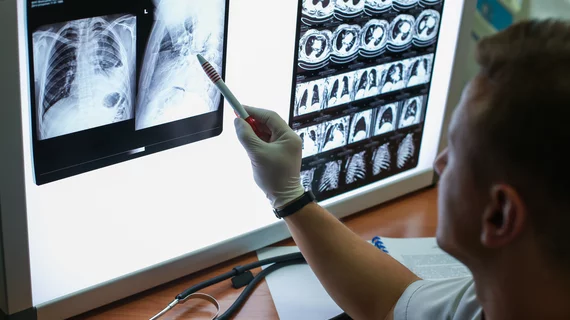New research highlights imaging features radiologists should look out for in breakthrough COVID cases
Serious illness in those who are considered fully vaccinated against COVID-19 is rare, but as new variants emerge it is important to investigate the imaging manifestations of these "breakthrough" cases.
Since these cases are rare little is known about how infection presents on medical imaging. Recently, researchers at the University of Maryland School of Medicine studied the imaging features of breakthrough cases to better understand how these situations progress from a radiology standpoint.
Their work should come as welcomed news for anyone who has been diagnosed with a breakthrough infection, the authors noted.
“The majority of the patients with COVID-19 breakthrough illness had absent or mild imaging findings and a benign clinical course,” corresponding author, Rydhwana Hossain, from the Department of Radiology at the University of Maryland School of Medicine, and c-oauthors reported this week in Radiology.
Their research was conducted at an urban academic center and focused on the chest X-rays and chest CT scans of patients with breakthrough infections. Out of the 60 patients at their institution who were hospitalized with CVOID-19 from Aug. 26-Sept. 8, only eight were fully vaccinated.
Mild respiratory symptoms were noted in six patients, five of whom were immunosuppressed. Four patients had normal chest radiographs. Looking at positive chest X-rays, the most common radiographic finding was ground glass opacities (documented in 3 out of 5 patients) with mild-to-moderate severity scores.
Additionally, 6 of 8 patients were discharged with no lingering respiratory symptoms. Two required ICU stays, but one was discharged without symptoms and did not require supplemental oxygen and the other had been transferred to a medical floor with oxygen assistance by the end of the study.
“As the number of COVID-19 breakthrough cases is likely to increase, it will be important to continually document imaging findings to determine if the imaging patterns remain consistent with those observed in this study or whether they evolve,” the authors noted.

